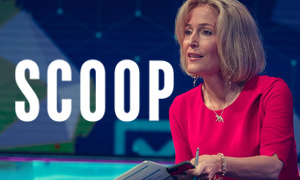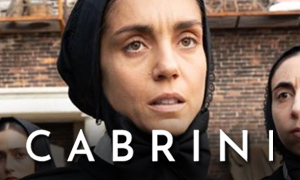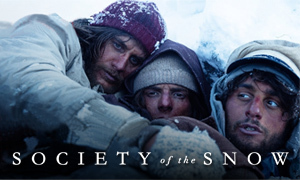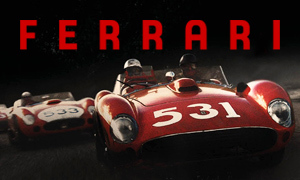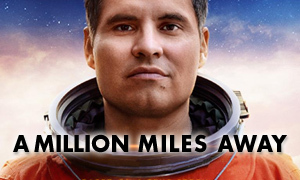Ferrari: History vs. Hollywood
Adam Driver
Born: November 19, 1983
Birthplace:
San Diego, California, USA
Enzo Ferrari
Born: February 20, 1898
Birthplace: Modena, Italy
Death: August 14, 1988, Maranello, Italy (leukemia)
Penélope Cruz
Born: April 28, 1974
Birthplace:
Alcobendas, Madrid, Spain
Laura Ferrari
Born: September 10, 1900
Birthplace: Racconigi, Italy
Death: February 27, 1978, Modena, Italy
Bio: Enzo Ferrari's Wife
Shailene Woodley
Born: November 15, 1991
Birthplace:
Simi Valley, California, USA
Lina Lardi
Born: 1911
Death: 2006
Bio: Enzo's Mistress and Mother of their Son Piero
Gabriel Leone
Born: July 21, 1993
Birthplace:
Rio de Janeiro, Brazil
Alfonso de Portago
Born: October 11, 1928
Birthplace: London, England, UK
Death: May 12, 1957, Cavriana, Italy (Mille Miglia crash)
Patrick Dempsey
Born: January 13, 1966
Birthplace:
Lewiston, Maine, USA
Piero Taruffi
Born: October 12, 1906
Birthplace: Albano Laziale, Italy
Death: January 12, 1988, Rome, Italy
Bio: Winner of the 1957 Mille Miglia
Jack O'Connell
Born: August 1, 1990
Birthplace:
Derby, England, UK
Peter Collins
Born: November 6, 1931
Birthplace: Kidderminster, Worcestershire, England, UK
Death: August 3, 1958, Bonn, Germany (crash at the 1958 German Grand Prix)
Bio: Ferrari Driver
When did Enzo Ferrari found his famous car company?
A former race car driver himself, the Ferrari true story reveals that Enzo had worked for Alfa Romeo and founded the racing team Scuderia Ferrari in 1929. It was during his time running the team that the prancing horse shield began to appear on his team's cars. Scuderia Ferrari was dissolved in 1937. Following a disagreement with Alfa Romeo's managing director, Enzo left the company in 1939 and started his own company, Auto-Avio Costruzioni. According to Road & Track, the company's main focus was to make aircraft parts and machine tools for Mussolini's government during World War II. However, in late 1939, Enzo was commissioned to make two racing cars for Lotario Rangoni. He named the car the Auto Avio Costruzioni 815. Enzo started making cars bearing his name in 1947, the year he founded Ferrari S.p.A.
What year is the Ferrari movie set?
Directed by Michael Mann, the movie is set in 1957, which was the center of a turbulent period for Enzo Ferrari. Italian racing driver Alberto Ascari had been killed two years prior in a Ferrari during a test run at the Autodromo Nazionale Monza. Enzo lost his 24-year-old son, Alfredo "Dino" Ferrari, on June 30, 1956 when he passed away from Duchenne muscular dystrophy, an event that affected Enzo deeply and worsened his relationship with his wife Laura. In March of 1957, 26-year-old Eugenio Castellotti perished while testing a new Ferrari Grand Prix car at the Modena Autodrome. Then on May 12, 1957, the infamous Mille Miglia Ferrari crash occurred, which is focused on in the film. In 1958, Ferrari lost Formula One drivers Luigi Musso and Peter Collins (portrayed by Jack O'Connell in the film), who both died in fatal crashes.
Did Enzo Ferrari speak English?
No. An obvious fictionalization in the movie is the fact that Adam Driver is speaking English with an Italian accent. The real Enzo Ferrari spoke Italian and some French. It's debatable whether he understood any English, but he certainly did not speak it. Adam Driver previously spoke with an Italian accent in Ridley Scott's House of Gucci.
Did Enzo Ferrari have a crude demeanor?
Yes, and a fact-check reveals that he was even more offensive than the movie depicts. In Brock Yates' book, Enzo Ferrari: The Man and the Machine, he writes that Enzo was known for being crude at dinner meetings, doing such things as belching loudly and scratching his crotch. Director Michael Mann opted to present a more refined Enzo Ferrari, choosing not to include his less savory habits that might turn off audiences.
Did Enzo Ferrari have multiple affairs?
While the movie mainly focuses on his wife Laura (Penélope Cruz) and his mistress, Lina Lardi (Shailene Woodley), the real Enzo Ferrari had many affairs and was obsessed with sex. According to Enzo Ferrari: The Man and the Machine, the 1991 book on which the film is based, Enzo came to view his marriage to Laura as nothing more than a legal agreement and had gotten married because he thought it would help his image when it came to his career. A TIME article states that he told racing manager and personal associate Romolo Tavoni that "a man should always have two wives."
His extramarital activities were by no means confined to mistress Lina Lardi. He had a plethora of affairs, often dating a variety of "flashy, often trashy women," sometimes up to three at a time. In 1961, he wrote, "I am convinced that when a man tells a woman he loves her, he only means that he desires her and that the only perfect love in this world is that of a father for his son."
Did Enzo Ferrari keep the existence of son Piero Lardi a secret?
For the most part, yes. It's true that he kept Piero, his son with mistress Lina Lardi, a secret from his wife Laura, only telling a handful of confidantes. Biographer Brock Yates writes that Laura found out about Piero "at some point in the late 1950s." In a Ferrari fact-check video posted by the company itself, the real Piero Ferrari said that like in the movie, Laura learned the truth in 1957. As the film depicts, Enzo indeed made secret visits to see Piero, who had been born on May 22, 1945. He even once took Piero to visit his half-brother Dino's grave.
Did Laura Ferrari ever point a gun at her husband and fire?
No. In the opening scene of the movie, Laura Ferrari (Penélope Cruz) is furious at her husband to the point that she points a pistol at him and fires in his general direction. It's rather clear that she intentionally misses him and hits the wall behind him. Still, it's a scene that has left a lot of viewers wondering whether it happened in real life. In answering the question, "How true is the movie Ferrari?" we found no evidence that this incident actually happened. Instead, it is the filmmakers' fictional interpretation of how Laura might have reacted to her husband's philandering.
Did Enzo Ferrari refuse to acknowledge the son he had with mistress Lina Lardi out of a promise he made to his wife Laura?
Not exactly. In a moving scene, the film depicts Laura Ferrari (Penélope Cruz) asking her husband not to acknowledge his illegitimate son Piero until after her death. She had tolerated his affairs but would not endure the embarrassment of him having a second family. Laura wasn't the only reason Enzo didn't acknowledge Piero until after Laura's death in 1978. Italy's rigid divorce laws prevented him from doing so. Following Laura's passing, Enzo officially adopted Piero, who started using the name Piero Lardi Ferrari. He worked at the company and is currently its billionaire vice chairman.
Did Laura Ferrari make life difficult for the employees at the Ferrari factory?
Yes. After Dino Ferrari's death in 1956, Laura became much more involved with the business in Modena and made life difficult for the Ferrari employees. According to Brock Yates, author of Enzo Ferrari: The Man and the Machine, things got particularly tense whenever Laura saw Piero Lardi, Enzo's son with mistress Lina Lardi, at the factory. Laura could be heard shouting "Bastard!" at Piero.
As for husband Enzo, he coped with Dino's death by becoming even more emotionally detached and threw himself into the racing side of the business. He showed little emotion toward his drivers and became hyper-focused on winning. "He really didn't care about the drivers," John Nikas, founder of the British Sports Car Hall of Fame, told TIME. His disregard for his drivers is conveyed at the end of the film after the fatal Mille Miglia Ferrari crash. However, according to his son Piero, this is not accurate. Any callousness his father may have had is significantly exaggerated in the film. He said that his father was not the cold man the movie makes him out to be.
Was Maserati favored to win the Mille Miglia?
Yes. As noted by Sports Illustrated, Maserati's new 4.5-liter models were the fastest sports cars in the world at the time. Two were going to be in the race, one driven by British racing champion Stirling Moss and the other by France's top wheelman, Jean Behra. However, Behra irreparably damaged one of the 4.5s in a training run. As for Stirling Moss, he lost his brakes in the first bend beyond the city of Brescia. He avoided a catastrophe by forcing the car into low gear, which slowed his Maserati to an eventual stop just before it crashed into spectators by the Rezzato cemetery. With Moss out of the race, Ferrari became the favorite. Eight of the first ten cars to cross the finish line were Ferraris.
How accurate are the cars in the movie Ferrari?
The filmmakers went to painstaking lengths to feature accurate looking cars. While some of the cars are real, the ones driven the hardest in the movie are recreations that were made by taking laser scans of the bodies of real cars. Some of the recreations include the Maserati 450S, Ferrari 315 S, and Ferrari 355 S. The meticulously recreated bodies were placed on Caterham 620 chassis with supercharged inline-four engines. "For the Mille Miglia we had built seven of them and then the rest were real cars that we rented," stunt coordinator Robert Nagle told Autoweek.
Complementing the accurate cars is the fact that the movie was shot in Italy at some of the real locations. The same can't be said for other recent racing movies like Ford v Ferrari, which used Fontana, California as a stand-in for Le Mans.
Did Piero Lardi ask Alfonso de Portago for an autograph?
"No, that's a bit of poetic license in the film," Piero told Ferrari.com, "because back then, people didn't ask for autographs. Or at least I didn't collect them. But if I remember correctly, neither did my friends, my peers. ... as far as I know, autograph collecting wasn't a thing."
Did Enzo Ferrari and Alfonso de Portago meet right before the Mille Miglia race?
No. In real life, Enzo and Alfonso de Portago met the previous year. "De Portago had already started working with Ferrari by then," says son Piero Ferrari of the film's depiction of his father meeting De Portago shortly before the race. "[De Portago] was a Spanish nobleman who led a, shall we say, very, very free-spirited life. So he drove entirely out of passion." According to Autoweek, De Portago had joined the Ferrari team in 1953, driving both Grand Prix entries and sports cars.
Did Ferrari's Piero Taruffi win the Mille Miglia?
Yes. Our research into the true story confirms that 50-year-old Piero Taruffi, portrayed by Patrick Dempsey in the movie, had come out of semiretirement and won the 1,000-mile race for Ferrari. Referred to as the "old fox," the silver-haired Taruffi knew the mountain roads better than any other racer, but he had come up short in the Mille Miglia numerous times before. According to Sports Illustrated, he won the race driving a 4.2-liter Ferrari and had an average speed of 94.78 mph. Coming in second and third were Ferraris driven by German wheelman Count Wolfgang von Trips and Belgian driver Olivier Gendebien, respectively. The three men waited for fellow Ferrari driver Alfonso de Portago to arrive and take fourth place. However, De Portago never showed and they would soon learn of his tragic fate.
How many people died in the Mille Miglia crash?
28-year-old Alfonso "Fon" de Portago was on his way to a fourth-place finish in the Mille Miglia. However, with just 30 miles to go, he blew a tire at an estimated speed of 150 mph. According to Sports Illustrated, his 3.8-liter Ferrari swerved violently and its tail struck a curbstone on the left side of the road. The car catapulted over the first row of spectators and struck a group of more cautious spectators who had stayed at a safer distance. Motorsport Memorial notes that the car then slammed into a light pole, truncating the pole before bouncing to the other side of the road and ending up upside down in a ditch. De Portago and 40-year-old American Edmund Nelson, his navigator, died instantly. In addition, nine spectators were killed, five of whom were children, bringing the death toll to 11. Many others were injured, some critically. It's possible that others perished from their injuries later while in the hospital.
The glamorous racer Alfonso de Portago had lacked experience on the Mille Miglia course and had never run the entire route, despite attempting to do so twice before (his car caught fire once and he ran into a milestone early into his second try). At his last pit stop before the accident, De Portago had refused a tire change to save time. Just moments before his death, he stopped his car briefly to receive a kiss from actress Linda Christian. The black and white photograph of the kiss (displayed below), taken by an unknown onlooker, became known as The Kiss of Death.
Alfonso de Portago's crash wasn't the only deadly crash at the 1957 Mille Miglia. Dutch amateur driver Josef Gottgens sustained fatal injuries when he crashed into a tree driving a Triumph TR3 on wet roads in Florence. A motorcycle policeman was also killed, bringing the total death toll of the race that year to 13, the worst in its chaotic history. The cars had become too fast for the narrow roads and death had become all too common (six had died the year prior). Given the government had already objected to the race being run that year, it's not hard to understand why the Mille Miglia was banned.
Was the Mille Miglia crash as violent as what's seen in the movie?
In conducting our Ferrari fact vs. fiction analysis, we discovered that it wasn't far off. Adam Driver made headlines for his blunt response to an audience member during a Q&A after a screening of Ferrari at the Camerimage Festival in Poland. The questioner asked Driver, "What do you think about the crash scenes? They looked pretty harsh, drastic, and I must say, cheesy for me. What do you think?"
Adam Driver responded, "F*** you, I don't know. Next question."
While the movie may turn up the gore a notch to an almost "cheesy" level of graphic violence, especially with regard to the Mille Miglia 1957 crash, it's not far off from the truth. Two of the children who died were struck by a concrete milestone that Alfonso de Portago's car had ripped from the ground and sent hurtling into the crowd. As for the bodies of De Portago and his co-driver, Edmund Nelson, they were badly disfigured and lying underneath the upside-down car. The violence of the crash had torn De Portago's body into two sections. Depicting Alfonso de Portago's crash realistically without seeming over the top would have been a challenge for any filmmaker.
Did winning the Mille Miglia help get Ferrari out of the hole financially?
The movie builds its premise on the idea that if Ferrari doesn't win the Mille Miglia and sell more road cars, they'll be out of business. Luca Dal Monte, author of Enzo Ferrari: Power, Politics, and the Making of an Automotive Empire, arguably the definitive source on the Ferrari founder, says that the premise is "totally inaccurate." He told Autoweek that it was actually Maserati that was in a dire financial situation in 1957, not Ferrari. He also pointed out that the Mille Miglia, though important, was part of a larger championship series. In fact, Ferrari had won the World Championship in Formula One the year prior. The company was selling more cars than they ever had before, producing more than 100 cars in a year and selling them around the world. Despite it being a difficult time in Enzo Ferrari's personal life, having lost his son Dino the year prior, it was not a particularly difficult time for the company.
Was Enzo Ferrari charged with manslaughter for the Mille Miglia crash?
Yes. According to the Ferrari true story, the Italian government charged Enzo Ferrari and tire manufacturer Englebert with manslaughter, claiming that Alfonso de Portago's car didn't have proper tires for the Mille Miglia course. They cited this as the reason his tire blew, which resulted in 11 deaths, five of whom were children. Enzo found himself battling the Italian courts for several years, a fight that is left out of the film. He was eventually acquitted of the charge in 1961. Despite the tragedy and the impact it had on Enzo and the others at the company, the Mille Miglia was still seen as a win for Ferrari.
Did Enzo Ferrari believe in winning at any cost?
No, at least not according to his son Piero who says that the movie gets this aspect of his father wrong. "No, he wasn't like that," said Piero of the movie's portrayal. "He wanted to win. That was always the goal with any of the challenges he set himself. But he didn't want to win at any cost, especially not by putting the drivers' lives at risk."
Piero says that after accidents like the one at the 1957 Mille Miglia, as well as Lorenzo Bandini's 1967 death, his father would come home and say, "'Enough, we can't go on like this, we have to stop.' Then on Monday, he would come to the office, look at his workers, his technicians, and he'd say, 'So what do we do now? We have to move forward, we have to make sure these accidents don't happen.' And that was how he found the courage to keep going."
The real Enzo wasn't the emotionless bastard we see in the movie. He had many friends, could schmooze, and even be charming. After all, you don't build an empire like Ferrari by isolating yourself and not getting along with others.
Did Enzo Ferrari sell his company?
In the movie, Ferrari isn't producing enough cars for Enzo to cover the cost of also having a racing team. He's told by his accountant that Ferrari must win the Mille Miglia to stay afloat. Otherwise, he'll have to sell the company. As stated earlier, Ferrari wasn't that bad off financially in 1957 as the movie makes the company out to be. In real life, Enzo didn't end up selling 50% of the company to Fiat until ten years later.
Does Enzo's son, Piero Ferrari, approve of the Michael Mann movie?
For the most part, yes. Piero told the Los Angeles Times that what unfolds in the movie is "really what happened." He was particularly impressed with the way it captures his father's unwavering determination to succeed, commenting, "My father was a person who was always looking ahead, moving forward, never going back."
